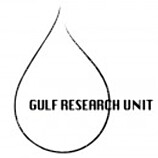
Archive: Gulf Research Blog
Blog articles from 2009 to 2012. The Gulf Research Unit is research programme based at the University of Oslo.
The fear of a Shia axis
Denne artikkelen er over ti år gammel og kan inneholde utdatert informasjon.
By: Bjørn Olav Utvik
An idea is afloat in the Arab world and beyond that a Shia axis is growing in strength and influence. It reached one high point in the aftermath of Israel’s war on Lebanon in 2006, when Hasan Nasrallah and Mahmud Ahmadinezhad scored highest on the list of important leaders in the Arab world in a survey carried out by Zogby’s. Nasrallah and his Iranian backers were carried high on a wave of popular anger against Israel and its Western supporters. More than anything the Lebanese Hezbollah stood forth as a movement that time and again had shown that, uniquely among Arabs thus far, it could hold its own in a military confrontation with Israel.
The reaction from the Arab capitals was the forging of an image of a sinister Shia challenge, and the pouring out of literature depicting the Shia as an age-old enemy of the majority Sunni Muslims.
In addition to Iran and Hezbollah the emerging axis supposedly consisted of the Shia parties dominating the new political set-up in Iraq, many of whom had spent long years of exile in Teheran, and of Syria and Hamas.
There are severe problems with this.
To the extent that the parties mentioned constitute an axis in the sense of exhibiting a degree of solidarity among them on the regional scene, something which is highly contestable in the case of the Iraqi Shia groups, religion is hardly the base of this alliance. While strong religious and ideological bonds exist between the Lebanese Hezbollah and Iran, whose Revolutionary Guard helped set up the organisation in the first place in the early 1980s, no ideological love is lost between the Iranians and the staunchly secular Syrian regime. The fact that many Syiran leaders have a family background from the minority Alawi population, who adhere to a theologically obscure Shia sect, does hardly make them religious bedfellows with the leaders in Teheran. Their ideology is secular Arab nationalism, and the religious beliefs of their sect are very far removed from those entertained in the clerical seminaries of Qom in Iran. As for the Palestinian Hamas it is distinctly a Sunni movement. All this means that the so-called Shia axis is really a set of alliances dictated by more or less overlapping political objectives that have preciously little to do with religion. Most supposed partners in the axis have a common enemy in Israel and seek allies against it where they can be found. But one should be careful with the role of Iran here. Despite the flamboyant anti-Israeli rhetoric of Ahmadinezhad Iran is obviously the least directly affected by Israeli power politics. Iran’s prime concern is to seek allies against the dominance in the area of the United States and its Arab allies. No better cause to champion then than the struggle against Israel, a role abdicated by the Arab regimes but deeply resonant with the feelings of the Arab masses (while on the home front the Iranian people remains more aloof).
What, then, is behind the scaremongering from some Arab capitals?
At one level it reflects a fear of the growth of internal opposition, more often than not led by Islamists. Movements like Hezbollah and Hamas are seen as exerting a dangerous influence in that they galvanise oppositional elements into believing that change is possible. Through their defiant stance against Israel they also throw into stark relief the inability and unwillingness of most Arab governments to act in defence of the Palestinian cause. By portraying these movements as mere tools in the hands of an expansionist non-Arab and non-Sunni Iran the governments hope to undermine the popular legitimacy of the Islamists.
At another level what is at stake is an historical unwillingness to come to terms with the existence of Iran as a major regional power. In any future stable Middle East Iran with a population equal to Iraq and the six Gulf monarchies combined will carry a lot of weight by the mere size of its economy. It also has strong religious, cultural and historical ties with the other side of the Gulf and with Iraq in particular. The majority of Iraq’s population belongs to the same brand of Islam as do ninety percent of the Iranians. The fall of Saddam Husayn has reopened contact across the border, and many leading politicians in current Iraq spent years of exile in Teheran.
Obviously the current power holders in Iran are not very nice people in terms of their internal policies. No doubt they are active at many levels, not all of them legitimate, to increase their influence over the political process in Iraq. But to interpret all evidence of Iranian influence in the region as signs of a threatening expansionist scheme on the part of Teheran, points to a potentially dangerous lack of preparedness for a future Middle East where no superpower hegemony will shield the local powers from having to deal with each other’s actual local strength.






